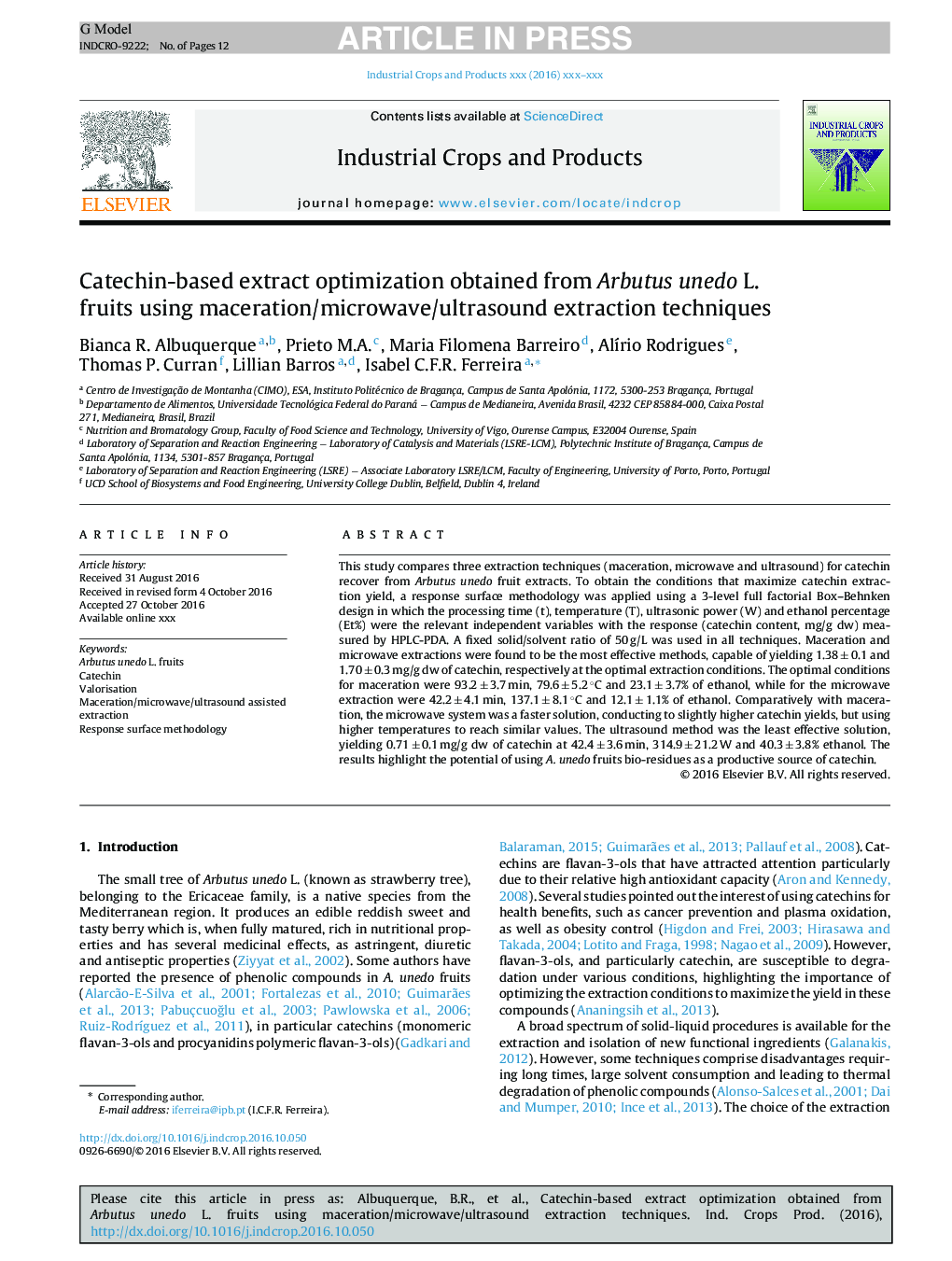| Article ID | Journal | Published Year | Pages | File Type |
|---|---|---|---|---|
| 8881038 | Industrial Crops and Products | 2017 | 12 Pages |
Abstract
This study compares three extraction techniques (maceration, microwave and ultrasound) for catechin recover from Arbutus unedo fruit extracts. To obtain the conditions that maximize catechin extraction yield, a response surface methodology was applied using a 3-level full factorial Box-Behnken design in which the processing time (t), temperature (T), ultrasonic power (W) and ethanol percentage (Et%) were the relevant independent variables with the response (catechin content, mg/g dw) measured by HPLC-PDA. A fixed solid/solvent ratio of 50 g/L was used in all techniques. Maceration and microwave extractions were found to be the most effective methods, capable of yielding 1.38 ± 0.1 and 1.70 ± 0.3 mg/g dw of catechin, respectively at the optimal extraction conditions. The optimal conditions for maceration were 93.2 ± 3.7 min, 79.6 ± 5.2 °C and 23.1 ± 3.7% of ethanol, while for the microwave extraction were 42.2 ± 4.1 min, 137.1 ± 8.1 °C and 12.1 ± 1.1% of ethanol. Comparatively with maceration, the microwave system was a faster solution, conducting to slightly higher catechin yields, but using higher temperatures to reach similar values. The ultrasound method was the least effective solution, yielding 0.71 ± 0.1 mg/g dw of catechin at 42.4 ± 3.6 min, 314.9 ± 21.2 W and 40.3 ± 3.8% ethanol. The results highlight the potential of using A. unedo fruits bio-residues as a productive source of catechin.
Related Topics
Life Sciences
Agricultural and Biological Sciences
Agronomy and Crop Science
Authors
Bianca R. Albuquerque, Prieto M.A., Maria Filomena Barreiro, AlÃrio Rodrigues, Thomas P. Curran, Lillian Barros, Isabel C.F.R. Ferreira,
